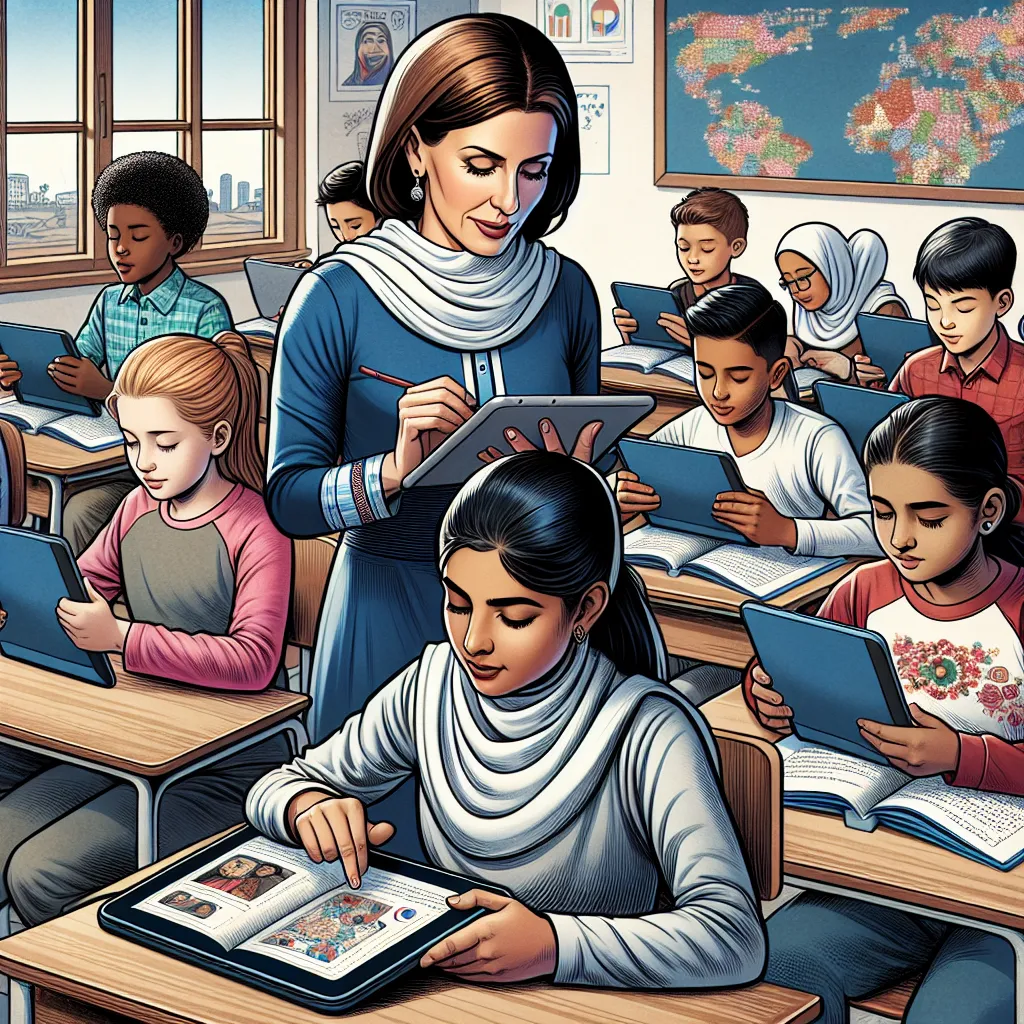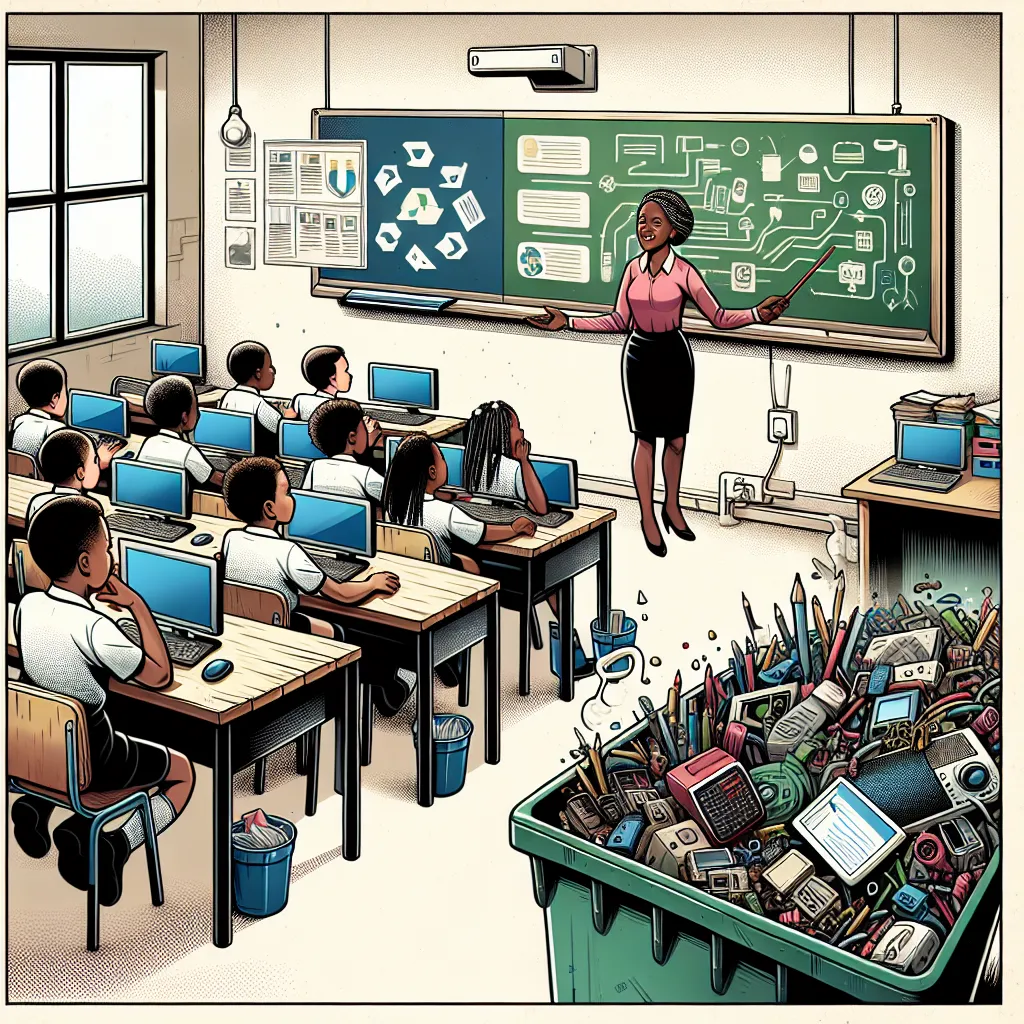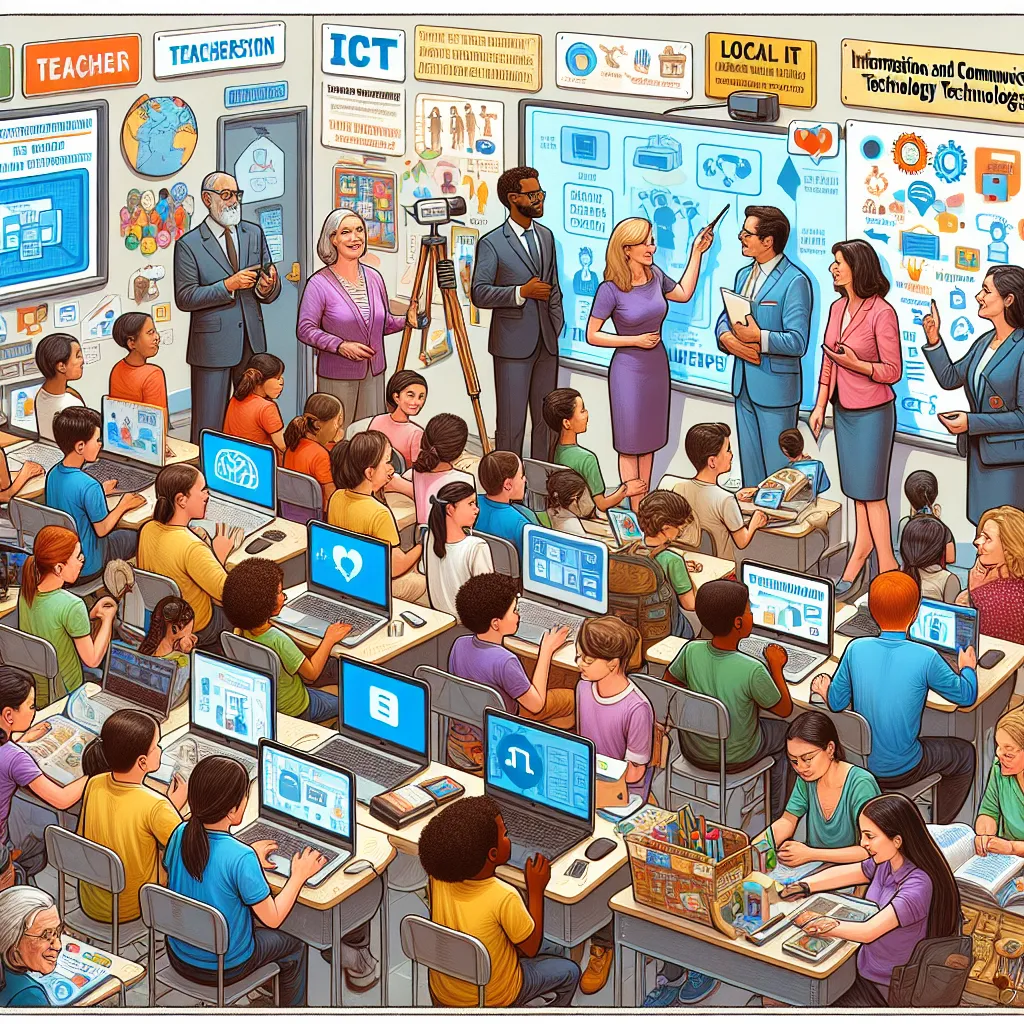Ask AI on The Internet
Question: Answer the question and reference the sources: Part 1: Understanding ICT Integration in South African Schools (40 marks) 1. Define ICT (Information and Communication Technologies) and explain why its integration is crucial in the context of South African education. [10] 2. Identify and elaborate on three significant challenges faced by South African schools when integrating ICTs into their educational framework. Provide specific examples if available. [15] 3. Discuss the digital divide issue in South African schools. How does it impact students' access to ICT resources and their learning experiences? Propose possible solutions to bridge this divide. [15] Part 2: Strategies to Support ICT Integration in Classroom Activities (40 marks) 4. Describe the SAMR (Substitution, Augmentation, Modification, Redefinition) model for technology integration. How can South African educators apply this model to enhance classroom activities with ICTs? [10] 5. Explain three innovative ways in which teachers can effectively use ICTs to engage students and facilitate active learning in the classroom. Provide examples for each. [10] 6. Discuss the importance of continuous professional development for educators concerning ICT integration. Outline specific training and support mechanisms that can empower teachers to use ICTs effectively. [10] 7. Explore the role of partnerships with local businesses or organizations in aiding South African schools with ICT resources and support. Provide examples of successful collaborations. [10] Part 3: Reflection and Future Action (20 marks) 8. On your personal experiences or observations regarding ICT integration in education. Share one specific example of successful ICT use in a classroom or educational setting and analyze why it was successful. [10] 9. As a prospective educator or concerned individual, propose three actionable steps that you can take to contribute to the integration of ICTs in South African schools. Explain how these actions could positively impact the educational landscape. [10]
Part 1: Understanding ICT Integration in South African Schools (40 marks) 1. Define ICT (Information and Communication Technologies) and explain why its integration is crucial in the context of South African education. [10] ICT (Information and Communication Technologies) refers to the various technological tools and resources used to communicate, create, disseminate, store, and manage information. These can include computers, the internet, broadcasting technologies (radio and television), and telephony. The integration of ICT in South African education is crucial for several reasons: - **Enhancing Learning and Teaching:** ICT can provide access to a wealth of information and resources that can enhance both teaching and learning processes. - **Addressing Educational Inequalities:** It helps in bridging the educational gaps by providing uniform access to educational materials and resources to students across different regions. - **Developing Digital Literacy:** Equips students with necessary digital skills that are essential in the modern economy and society. - **Improving Administrative Efficiency:** Streamlines school administrative processes, making them more efficient and effective. - **Encouraging Active Learning:** ICT facilitates interactive and engaging teaching methods, moving away from traditional rote learning. 2. Identify and elaborate on three significant challenges faced by South African schools when integrating ICTs into their educational framework. Provide specific examples if available. [15] - **Infrastructure and Connectivity Issues:** Many schools, especially in rural areas, lack the necessary infrastructure for ICT integration, such as reliable electricity and internet connectivity. For example, the lack of internet access in some rural schools makes it difficult to use online resources effectively. - **Limited Access to Devices:** There are often insufficient numbers of computers and other digital devices available for students. In under-resourced schools, students might have to share a single computer amongst many, reducing the time each student can spend on the device. - **Teacher Training and Support:** Many teachers are not adequately trained to use ICT effectively in their teaching. Without proper training and ongoing support, even motivated teachers may struggle to integrate these technologies into their classrooms. 3. Discuss the digital divide issue in South African schools. How does it impact students' access to ICT resources and their learning experiences? Propose possible solutions to bridge this divide. [15] The digital divide refers to the gap between those who have access to ICT and those who do not. In South Africa, this divide is pronounced between urban and rural areas, as well as between wealthy and under-resourced schools. Impacts on Students’ Access and Learning Experiences: - **Limited Educational Opportunities:** Students in schools without adequate ICT resources miss out on opportunities to engage with modern educational tools and resources. - **Existing Inequalities:** The divide exacerbates existing educational inequalities, making it harder for students from underprivileged backgrounds to compete academically. - **Reduced Digital Literacy:** A lack of access to ICT prevents students from developing essential digital skills required in the modern job market. Possible Solutions: - **Government Investment:** The government can increase funding to provide necessary ICT infrastructure and resources, particularly in under-resourced and rural schools. - **Public-Private Partnerships:** Encouraging partnerships between schools and private companies can help supply devices, internet connectivity, and training programs. - **Teacher Training Programs:** Implementing comprehensive teacher training initiatives to ensure educators can effectively integrate ICT into their teaching methodologies. Part 2: Strategies to Support ICT Integration in Classroom Activities (40 marks) 4. Describe the SAMR (Substitution, Augmentation, Modification, Redefinition) model for technology integration. How can South African educators apply this model to enhance classroom activities with ICTs? [10] The SAMR model, developed by Dr. Ruben Puentedura, offers a framework for understanding and implementing technology integration in education, progressing through four levels: - **Substitution:** Technology acts as a direct substitute with no functional change (e.g., using a word processor instead of pen and paper). - **Augmentation:** Technology acts as a direct substitute with functional improvements (e.g., using spell check in a word processor). - **Modification:** Technology allows for significant task redesign (e.g., students collaborate on a shared document using Google Docs). - **Redefinition:** Technology allows for the creation of new tasks that were previously inconceivable (e.g., students create a multimedia project and share it globally for feedback). South African educators can apply this model by first integrating basic technological tools into their classrooms (Substitution and Augmentation), then gradually moving towards more transformative uses of technology (Modification and Redefinition) as they and their students become more comfortable and proficient. 5. Explain three innovative ways in which teachers can effectively use ICTs to engage students and facilitate active learning in the classroom. Provide examples for each. [10] - **Flipped Classroom:** Teachers can use video platforms to record lessons, which students can watch at home. Classroom time can then be used for interactive activities, problem-solving, and discussions. Example: Using YouTube or an LMS (Learning Management System) like Moodle to provide lecture videos. - **Gamification:** Incorporating game elements into learning activities to make lessons more engaging and fun. Example: Using platforms like Kahoot or Quizlet to create interactive quizzes and learning games. - **Collaborative Projects:** Utilizing cloud-based tools for students to collaborate on projects in real-time. Example: Using Google Workspace (Docs, Sheets, Slides) for group assignments, where each student can contribute and edit the document simultaneously. 6. Discuss the importance of continuous professional development for educators concerning ICT integration. Outline specific training and support mechanisms that can empower teachers to use ICTs effectively. [10] Continuous professional development is crucial for educators to keep up with rapid technological advancements and to develop the skills needed to effectively integrate ICT in teaching. With ongoing training, teachers can: - **Stay Updated:** Keep abreast of the latest educational technology trends and tools. - **Enhance Skills:** Develop new teaching strategies that leverage ICT for better educational outcomes. - **Build Confidence:** Feel more confident and competent in using ICT in their classrooms. Specific Training and Support Mechanisms: - **Workshops and Seminars:** Regular training sessions focused on different aspects of ICT integration. - **Online Courses and Webinars:** Flexible learning options for teachers to learn at their own pace. - **Peer Collaboration:** Encouraging collaboration among teachers to share best practices and resources. - **Technical Support:** Providing access to a dedicated IT support team to assist with technical issues and troubleshooting. 7. Explore the role of partnerships with local businesses or organizations in aiding South African schools with ICT resources and support. Provide examples of successful collaborations. [10] Partnerships with local businesses or organizations can be instrumental in providing much-needed ICT resources and support to South African schools. These partnerships can take various forms, including donations of equipment, funding for infrastructure, and providing technical expertise. Examples of Successful Collaborations: - **Vodacom Foundation:** The Vodacom Mobile Education Programme provides teachers with training and access to educational content via ICT. - **Telkom Foundation:** The Connected Schools project equips schools with internet connectivity and offers teacher training in digital literacy. - **Microsoft South Africa:** Through its various educational initiatives, Microsoft offers free access to software like Office 365, training programs for teachers, and support for schools to harness the power of technology in education. Part 3: Reflection and Future Action (20 marks) 8. Reflect on your personal experiences or observations regarding ICT integration in education. Share one specific example of successful ICT use in a classroom or educational setting and analyze why it was successful. [10] During my time as a teaching assistant, I observed a mathematics teacher who effectively used interactive whiteboards to teach complex concepts. The success lay in the teacher’s ability to: - Make abstract concepts concrete through visual representation and dynamic manipulation of mathematical models. - Engage students by inviting them to interact directly with the board during problem-solving activities. - Integrate multimedia resources, such as instructional videos and online simulations, to enrich the learning experience. The key factors contributing to this success were the teacher’s proficiency with the technology, the accessibility of the whiteboard to all students, and the interactive and engaging nature of the lessons. 9. As a prospective educator or concerned individual, propose three actionable steps that you can take to contribute to the integration of ICTs in South African schools. Explain how these actions could positively impact the educational landscape. [10] - **Advocate for Government and Private Sector Support:** Mobilize efforts to lobby for increased investment in ICT infrastructure and resources for schools. This could help bridge the digital divide and ensure equitable access to educational technology. - **Offer ICT Training Workshops:** Organize and conduct workshops for teachers to enhance their skills and confidence in using ICT tools. Empowering teachers with the necessary skills will significantly improve the quality of ICT integration in classrooms. - **Promote E-Learning Platforms:** Encourage the use of e-learning platforms that provide a wide range of educational resources and enable personalized learning experiences. This can cater to diverse learning needs and foster an inclusive learning environment. These actions can collectively contribute to a more digitally inclusive and competent educational landscape, ensuring that all students have the opportunity to benefit from ICT-enhanced learning.
Think your answer is better than the AI's? Post it below.
Other Most Relevant Posts:
Question Tags
If you want your question answered by an AI, click here.







Post your own comment: